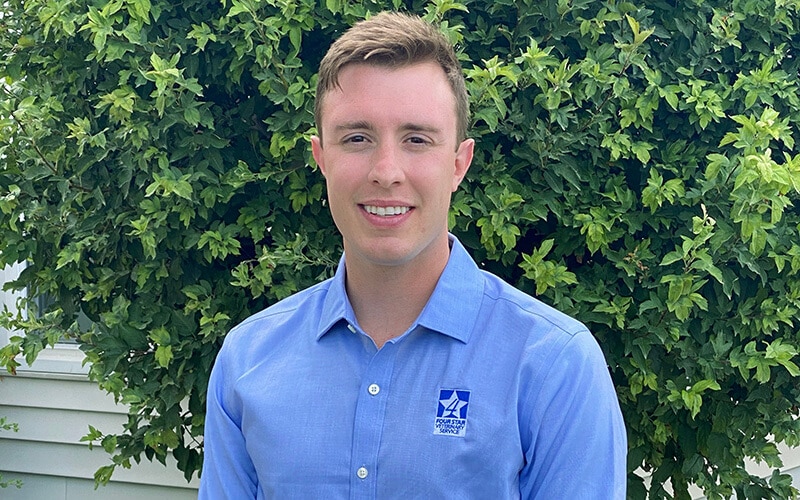
A dry cough heard in a finishing unit usually indicates Mycoplasma hyopneumoniae (M. hyo) is causing respiratory distress and reducing growth in pigs almost ready for market.
“We’ve been seeing M. hyo in finishing where it pops up in mid- to late-finishers,” reported Bryant Chapman, DVM, Four Star Veterinary Service (FSVS). “It decreases feed intake and potentially causes mortality, especially if it has a secondary disease with it as well.”
Working from the FSVS clinic in Chickasaw, Ohio, Chapman helps clients reduce the effects M. hyo can exert on a farm if left unchecked. The cost of finishing pigs infected with M. hyo is estimated at $3 to $5 per head more than pigs without the disease.
Immediate response
“Mycoplasma is a slow-moving bug and is slow to show itself, which is why we see it in finishing,” he explained. “Clients will call and say ‘I have healthy-looking finishing pigs, but they have this dry, non-productive cough.’
“Depending on when the hogs will be marketed, we rely on antibiotics. Feed-grade and water-grade medications given over a period of time do fairly well to decrease the symptoms at the finishing level. And we do follow-up with injectables on a few animals needing it.”
Because M. hyo is a respiratory pathogen, dusty conditions and poor ventilation will exacerbate the symptoms. It also appears more in the winter when buildings are closed up.
Seeking the source
“Some farms we work with on finishing, the clinical signs show up at the end stage when they get compounding factors like porcine reproductive and respiratory syndrome (PRRS) or the flu and we find M. hyo via testing,” he added.
To test M. hyo in finishing, Chapman recommends using lung tissue from freshly euthanized pigs rather than oral fluids from live pigs, which is a less sensitive test.
Typically, the source for an M. hyo outbreak is at the sow farm. Sometimes, the outbreak in finishing is the first indication that a sow unit may be infected with M. hyo, especially if the sow unit went through an elimination for the disease. Tracheal or laryngeal swabs for testing verify the disease outbreak.
Depending on the severity of the outbreak and the herd’s health status, sow farms may work out a control program with their veterinarian to use vaccinations and exposures. Or they may decide to undergo an elimination of M. hyo.
Pros, cons of elimination
“Many farms choosing to go through an M. hyo elimination have either been exposed to or associated with PRRS,” Chapman said. “If they are going to do a PRRS elimination, they will just go that extra length of time to eliminate mycoplasma.”
Eliminating two diseases at once is a positive, but the time needed to eliminate both is 8 to 9 months.
A successful elimination is also helped by the farm setup. “If you have the availability and resources to stock enough females for a closure, or you can have off-site breeding facilities for a closure, it might be feasible,” he explained. “But if you have to completely shut down females for 8 or 9 months without any prep for a pause in production, that would be pretty painful for a farm.”
Hog farms have used different methods to eliminate M. hyo and other disease from their herds. Generally, all methods are costly, and the level of success is 50% to 80%, Chapman said.
Some farms have been able to keep M. hyo out of the system. He works with a few farms that are negative and have not found it in their finishers.
In the end, producers dealing with M. hyo will need to decide based on a cost/benefit analysis what path will be best to handle the pathogen in their own unit, he added.
Check with your Four Star veterinarian to determine the best steps forward following a mycoplasma outbreak on your farm.
